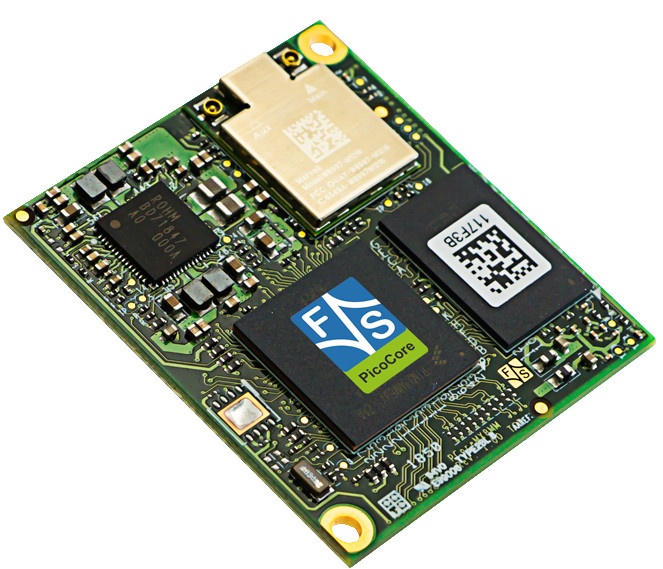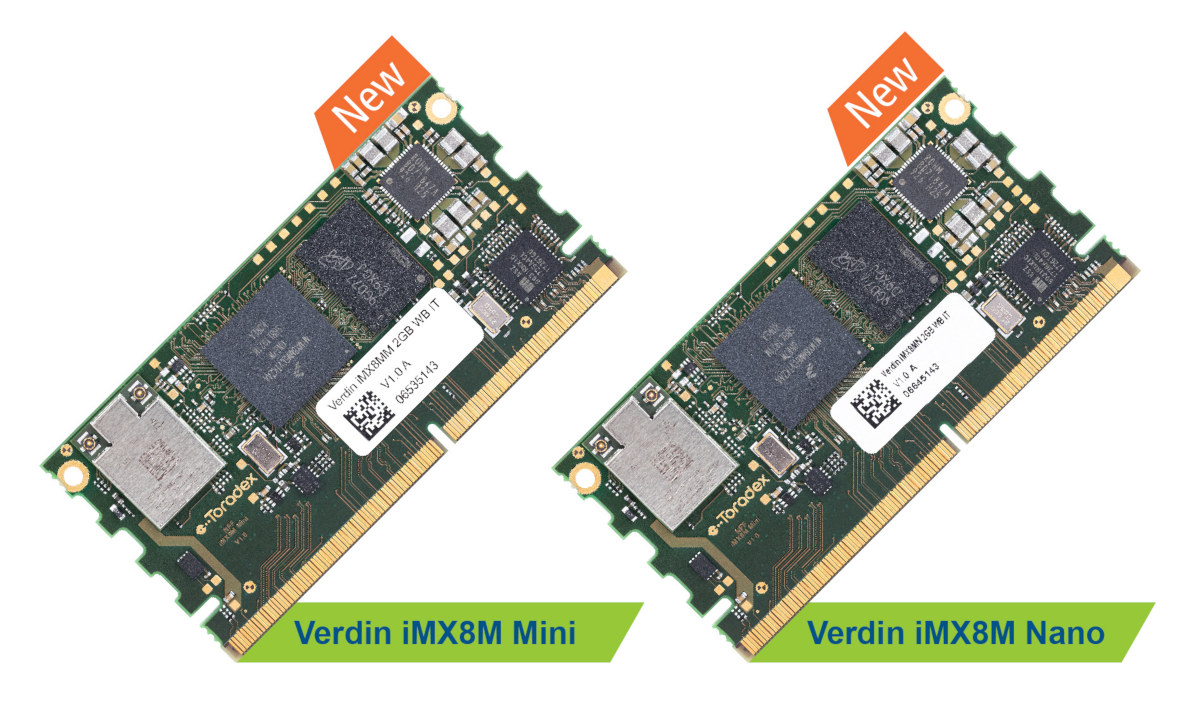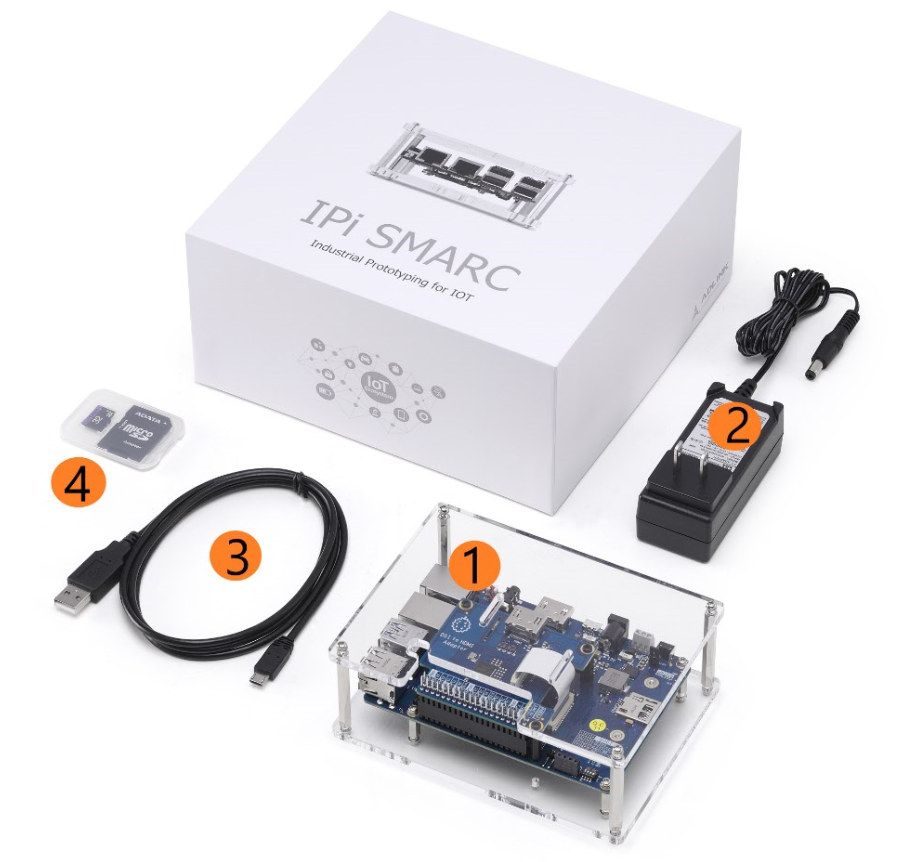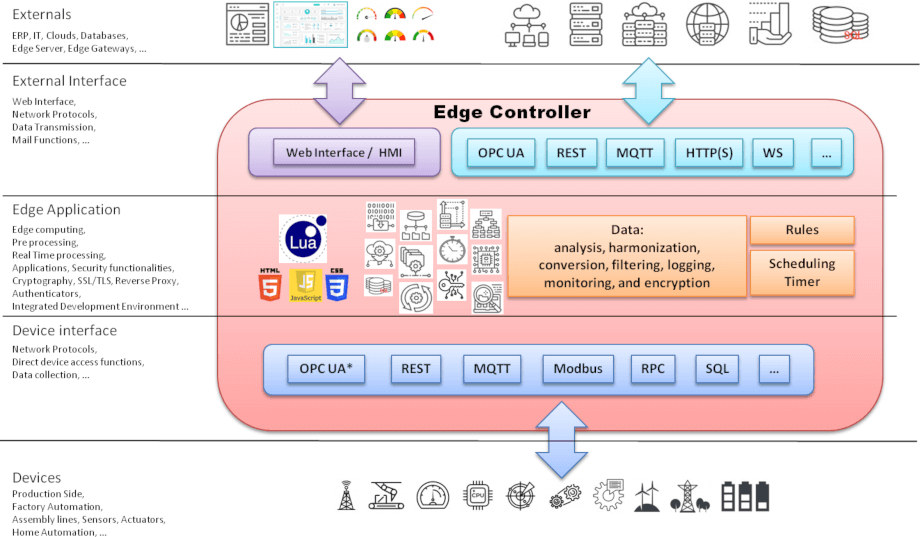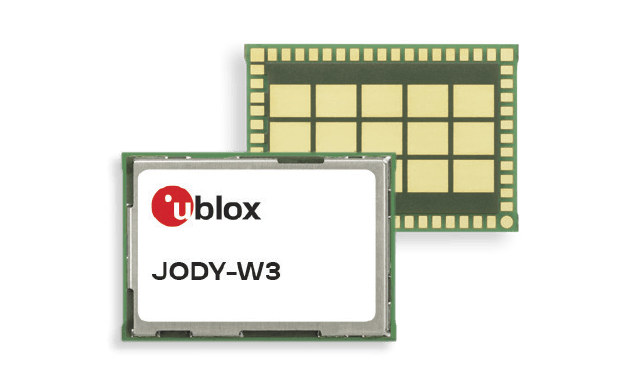The PicoCore MX8MN Nano carries the NXP i.MX 8M Nano F&S Elektronik Systeme has announced the development of the smallest i.MX 8M based CoM yet: the PicoCore MX8MN Nano. Previously we had reported on the Congatec Conga-SMX8 Nano which was a fairly small CoM compliant with SMARC 2.0 standard. The PicoCore MX8MN is based on the NXP i.MX 8M Nano CPU with 1 to 4 Arm Cortex-A53 cores and a Cortex-M7 real-time core. The Nano is set to carry up to 8GB RAM and 32 GB eMMC, with optional WiFI/BT and support for -40º C to 85º C temperature ranges. Similar to Predecessor The PicoCore MX8MN Nano is very similar in structure to the PicoCore MX8MM Mini CoM, but with a different i.MX 8M Mini processor featuring the same Arm Cortex-A53 cores, but the Cortex M4 real-time core is changed to a more powerful Cortex-M7 core in the MX8MN Nano. […]
Toradex Launches New Verdin Arm SoM Family Starting with iMX8M Mini/Nano Modules
So far, Toradex had two Arm-based system-on-module families with the smaller, lower-power Colibri and more powerful Apalis modules. The Colibri form factor was first defined in 2005, and the company is still maintaining it, but since then new interfaces have emerged, so Toradex has now designed a new low-power module family called Verdin. Toradex Verdin modules offer more I/Os with a 260-pin edge connector, include a battery-ready design with a wide input voltage range (3.3 to 5V), low power 1.8V IOs, the ability to easily extend power management to carrier board peripherals, and off-the-shelf thermal solutions. The modules are also tested for EMC, shock and vibration tolerance, and “Toradex Direct Breakout” is said to simplify signal routing on carrier boards as high speed, impedance critical signals are routed from the source IC to the edge connector on the Verdin module in such a ways to limit complexity on the carrier […]
ADLINK Industrial-Pi (I-Pi) SMARC Development Kit Features Rockchip PX30 SoC
ADLINK Technology has just announced the Industrial-Pi (I-Pi) SMARC Development Kit to help engineers quickly design prototypes for industrial applications using peripherals and sensors. The I-Pi SMARC development kit is comprised of a baseboard, LEC-PX30 SMARC-compliant Rockchip PX30 system-on-module, an acrylic case, a 12V/2A power supply, USB cable, and a 32GB MicroSD card. The company promotes the kit as “an industrial-ready substitute for Arduino and Raspberry Pi (RPi) platforms that are commonly used for prototyping but cannot typically be ‘dropped’ into an industrial solution as-is“. LEC-PX30 SMARC System-on-Module Specifications: SoC – Rockchip PX30 Quad-core Arm Cortex-A35 CPU with TrustZone technology, ARMv8 Cryptography Extensions, Mali-G31 GPU System Memory – 1GB or 2GB DDR3L at 1066/1333 MHz Storage – 8, 16, 32 or 64 GB eMMC flash Connectivity – 10/100M Ethernet from SoC, 10/100M Ethernet via LAN9514 USB 2.0 Ethernet controller Video Decoding – H.264 up to 1080p60, H.265/HEVC up to 1080p60, […]
Barracuda App Server for ESP32 Let You Easily Develop Lua Apps via Your Web Browser
We covered Real Time Logic’s open-source lightweight Minnow Server for microcontrollers last year, and now the company has released another project: Barracuda App Server for ESP32. This project is more complex and requires an ESP32 board with PSRAM to run such as boards based on ESP32-WROVER module with 4 to 8MB PSRAM. The Barracuda App server (BAS) comes with a Lua VM, and in complement with the LSP App Manager that facilitates active development on the ESP32 by providing a web interface. The Barracuda App Server runs on top of FreeRTOS real-time operating system part of Espressif free ESP-IDF development environment. The company provides instructions to build BAS from source, as well as the LSP (Lua Server Pages ) App Manager that links to the binary-only BAS library. The Linux version of the ESP-IDF is recommended, so in Windows, you should install the “Windows Subsystem for Linux” first. The source […]
u-Blox Launches JODY-W3 WiFi 6 & Bluetooth 5.1 Module for Automotive Applications
u‑blox has just launched JODY-W3 wireless module which the company claims to be the first automotive-grade WiFi 6 module. Apart from supporting 802.11ax WiFi with 2×2 MIMO, the module also comes with dual-mode Bluetooth 5.1 connectivity. WiFi 6 will be used for applications demanding higher bitrates such as ultra‑HD video infotainment streaming and screen mirroring, wireless back‑up cameras and cloud connectivity as well as vehicle systems maintenance and diagnostics. Bluetooth 5.1 will be used for keyless entry systems and other applications leveraging direction-finding and the longer range offered by the latest version of Bluetooth. JODY-W3 module specifications: Connectivity Dual-band 802.11ac WiFI 5 and 802.11ax WiFI 6 with 2×2 MIMO support, WPA3 security Bluetooth 5.1 Classic and Low Energy; HCI profile Antennas JODY-W374 variant – 2x antenna pins for separate Bluetooth and Wi-Fi external antennas JODY-W377 variant – 2x antenna pins for Wi-Fi and one antenna pin for Bluetooth external antennas […]
The Things Industries Launches Global Join Server for Secure LoRaWAN
Co-Founder and CEO of The Things Industries Wienke Giezeman announced the launch of Global Join Server (GJS) which is a secure component of the LoRaWan server. As an ecosystem, Global Join Server allows activating devices of any LoRa network from anywhere on the World. According to Giezeman, it works with the Things Network, the Community Network, cloud hosting solutions, etc. It works no matter if it is a part of a network server outside the Things Industries, as long it uses LoRa standard interfaces. The Global Join Server’s role is to store root keys, generate session keys and send them securely to the Network Server and Application Server. There is no more need to send keys by email or to print them on the boxes, they are already in a secure place. The Things Industries offers to device makers, module makers and distributors, access to a network-agnostic Join Server of […]
XMOS launches Xcore.AI, a scalable AI processor for the Edge
XMOS, known for its high-performance voice interfaces, is joining the AIoT bandwagon with the announcement of the Xcore.ai, a flexible and economical processor delivering high-performance AI, DSP, control, and I/O’s in a single device. IoT and AI have been one of the most trending topics and fields in the last decade. Both areas have seen large innovations in between them. Deep neural networks have become better, IoT deployment cost has also been greatly reduced, and most importantly, they both have a significant impact on multiple industries. An interesting trend recently is the emergence of applications merging AI and IoT together to form so-called AIoT applications. IoT will be the digital nervous system, while AI will become the brain that makes all the critical decisions which will control the whole system. AIoT has led to the development and deployment of what we call AI processors or AI modules that can be […]
Google Releases Android 11 Developer Preview – What’s New?
I’ve only just upgraded my Xiaomi Mi A2 phone to Android 10 earlier this week, but Google is already preparing for the next version of the mobile operating system, and the company has already released the first developer preview for Android 11 OS. Enhancements for foldables and 5G, call-screening APIs, new media & camera capabilities, and machine learning are some of the improvements brought to Android 11 so far. Some of Android 11 highlights include: Updates of existing connectivity APIs to take advantage of improved 5G speeds. Dynamic meteredness API to check whether the connection is unmetered in order to offer higher resolution or quality for users who don’t need to pay extra for data Bandwidth estimator API to check the downstream/upstream bandwidth without having to poll the network. Pinhole and waterfall screen support – Pinhole screens are the ones with a round opening for the camera, and waterfall […]


